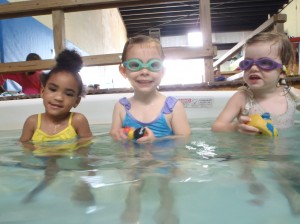If you have a young child that’s just starting to show interest in swimming, you may be tempted to sign him or her up for private swim lessons. It’s understandable to think that private swim lessons may be superior to group lessons, but group swimming lessons have several advantages that you may be overlooking.
Learning from classmates
Peer pressure is a powerful motivator, even in young children. If you’ve ever dropped your child off at daycare where he or she is exposed to other children, you likely were amazed when you picked them up only to realize that they’d learned a valuable skill like using utensils or sitting in a chair at a table, all simply based on learning from other children.
When your child is involved in group swimming lessons, they’re not only paying attention to the instructor, but they’re also watching other kids as well. When they see another child
jumping in the water or having fun splashing, it will likely give them that extra boost of confidence they need. This is simply not possible with private lessons where all instruction is one on one, which doesn’t allow your child to see other children and how they react in the water.
Typically swim instructors will spend time with each child during a group lesson, which allows the children in the class to see how others are performing. This can help to put your child at ease when it’s their turn with the instructor.

Money saver
Costs are lower with group swimming lessons. You still receive quality instruction, but at a lower price, which can make swim lessons more affordable for a wider range of families.
Less focus and pressure on your child
This may seem counter-intuitive, but group swim lessons can provide less focus on your child throughout the entire lesson, which can be a good thing. Rather than spending 100 percent of the time focused on your child and your child alone, group swimming lessons allow for a bit of rest and play time while other students are receiving instruction. This is beneficial especially for young children who may have trouble with constant instruction for long periods of time.
Kids who are struggling to learn a new task often need some period of downtime to recover and refocus during a swim lesson, which is what’s provided in the group setting.
Connecting with other parents
Being a parent of young children can be difficult at times. You’re likely exhausted and struggling to find adult interaction with other parents of young children. Signing up for group swimming lessons connects you with other parents and children who are close in age to you and your child. You never know, you may develop a relationship that could turn into a lifelong friendship for you and/or your child.


